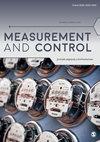第3章内部控制、分权与绩效
IF 2
4区 计算机科学
Q4 AUTOMATION & CONTROL SYSTEMS
引用次数: 1
摘要
内部控制机制是组织治理的基础;特别是与决策权分散相关的代理关系。管理会计和组织文献对权力下放和内部控制之间的关系提供了相互矛盾的预测,一些研究认为,应该加强内部控制,以减轻与更大的决策权下放相关的风险,而另一些研究则断言,更严格的内部控制会破坏权力下放的目的。在本章中,我们认为管理者共同选择这两个组织设计变量。本章利用采购职能部门内采购和付款过程中控制实践的独特数据库,探讨了控制严密性- -内部控制的一个关键特征- -与权力下放之间的关系。利用联立方程模型,研究发现分权和内部控制设计是内生决定的。严格控制与权力下放水平负相关,而权力下放对控制的严格程度有积极影响。这些结果调和了这两个变量之间明显矛盾的结果。本章还发现,权力下放和严格的控制机制既独立又协同地发挥作用,以提高绩效。本文章由计算机程序翻译,如有差异,请以英文原文为准。
Chapter 3 Internal Controls, Decentralization, and Performance
Abstract
Internal control mechanisms are fundamental to organizational governance; particularly, to the agency relationship associated with decentralization of decision rights. Management accounting and organizational literatures provide conflicting predictions on the association between decentralization and internal controls, with some research arguing that internal controls be tightened to mitigate the risks associated with greater decentralization of decision rights while other work avers that tighter internal controls defeat the purposes of decentralization. In this chapter, we argue that managers choose these two organizational design variables jointly. Capitalizing on a unique database of control practices in the purchasing and payment process within the procurement function, this chapter examines the relationship between control tightness – a critical characteristic of internal controls – and decentralization. Using a simultaneous equation model, the study finds that decentralization and internal control design are endogenously determined. Tight control is negatively associated with the level of decentralization, while decentralization has a positive effect on the tightness of control. These results reconcile the apparently contradictory results relating these two variables. The chapter also finds that decentralization and tight control mechanisms operate both independently and synergistically to improve performance.
求助全文
通过发布文献求助,成功后即可免费获取论文全文。
去求助
来源期刊

Measurement & Control
工程技术-仪器仪表
自引率
10.00%
发文量
164
审稿时长
>12 weeks
期刊介绍:
Measurement and Control publishes peer-reviewed practical and technical research and news pieces from both the science and engineering industry and academia. Whilst focusing more broadly on topics of relevance for practitioners in instrumentation and control, the journal also includes updates on both product and business announcements and information on technical advances.
 求助内容:
求助内容: 应助结果提醒方式:
应助结果提醒方式:


